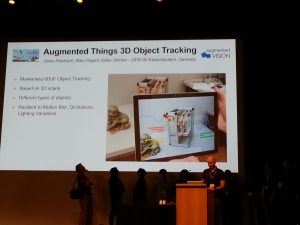On November 27th 2018, Dr. Alain Pagani was invited by the State Fire and Rescue Service of the Republic of Latvia to give a talk on the use of Augmented Reality for education and awareness raising in the International Conference “Societal Security in the Baltic Sea Region: Challenges and Solutions”.
The main focus of the conference, organized jointly by the State Fire and Rescue Service of Latvia (VUGD) and Riga Stradins Universtiy, in cooperation with the Permanent Secretariat of the Council of the Baltic Sea States, the Swedish Institute and the Swedish Civil Contingencies Agency, was on introducing civil safety in education and the promotion of community awareness of safety in the Baltic Sea region. Dr. Alain Pagani introduced several aspects of Augmented Reality, including recent works from the Department Augmented Vision, and presented advantages of Augmented Reality for education, training and awareness raising.
He could share his views on the use of novel technologies in education during the panel discussion on the subject “education as a core element of societal security culture”, together with Mr Martins Baltmanis, Deputy Chief of the State Fire and Rescue Service of Latvia, Ms Ruta Silina, Head of Division of Communication and International Cooperation at Riga Stradins University, and Ms Elisabeth Braw, Associate Fellow at the Royal United Services Institute for Defence and Security Studies, United Kingdom.










